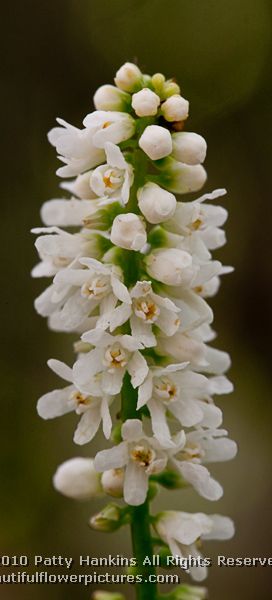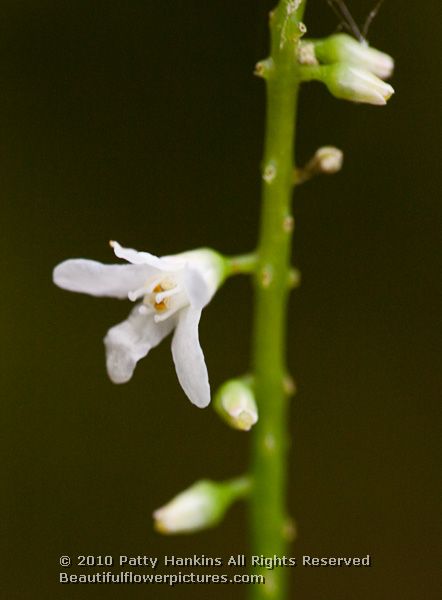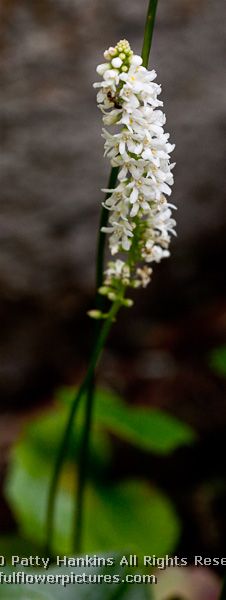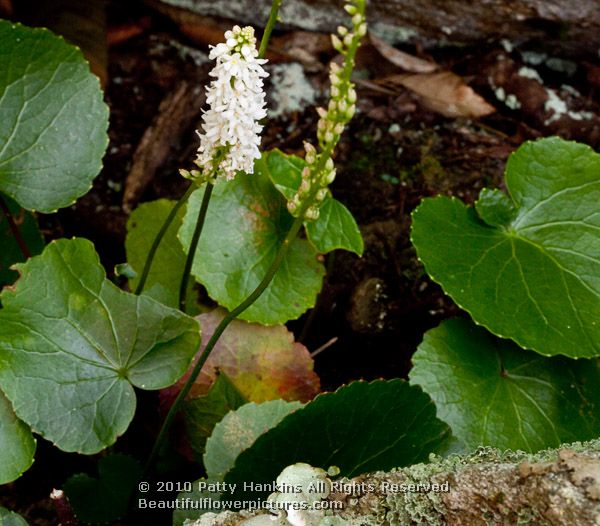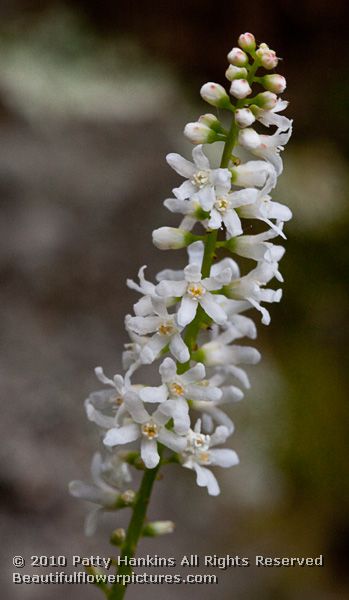On my recent trip to North Carolina, one of the wildflowers that I photographed for the first time was galax (galax urceolata). I photographed galax in two locations – on the trail to Erwin’s View of Linville Falls and along the Tanawha Trail near the Linn Cove Viaduct visitor center. It is also known as Beetleweed, Coltsfoot and Wand Flower.
(c) 2010 Patty Hankins
Galax is a member of the Diaspensiaceae family. A perennial with evergreen leaves, galax has dainy white flowers growing on leafless stalks up to 15″ tall. The flowers have 5 white petals. It blooms from May through July.
(c) 2010 Patty Hankins
Native to the United States, it’s native habitat is in mountain woods ranging from Maryland to Alabama. It will grow as far north as USDA Zone 5a and south to USDA Zone 8b. It tends not to do as well in gardens since it prefers the rich well-drained woodland soil to thrive. They do not transplant well – so please don’t dig them up in the wild to add to your garden.
(c) 2010 Patty Hankins
The leaves of the galax are much in demand by the floral industry. Not only will the shiny green leaves stay fresh for weeks, in winter the leaves turn red which adds a wonderful splash of color to holiday decorations. Overcollection of galax is enough of an issue that many localities have imposed limits on the collection of the leaves.
Traditionally galax has been used to treat cuts and wounds. An infusion of the root was used by Native Americans to treat kidney diseases. Information about medical uses is provided for information only – and is not a recommendation to use it medically.
I really enjoyed seeing the galax in the woods as I was hiking the trails along the Blue Ridge Parkway. In the past, I’ve done most of my hiking in the spring when many more woodland wildflower bloom. It was great to discover some of the summer blooming woodland flowers on this trip.
If you’d like to learn about galax – some online sites with additional information include
Lady Bird Johnson Wildflower Plant Database
Galax: An Annotated Bibliography by Mary L. Predney and James L. Chamberlain
